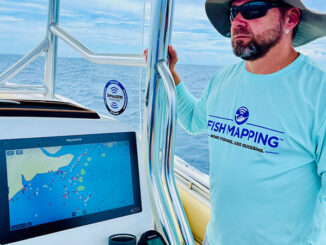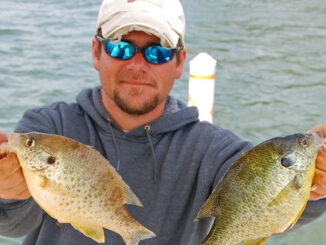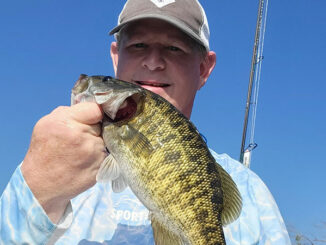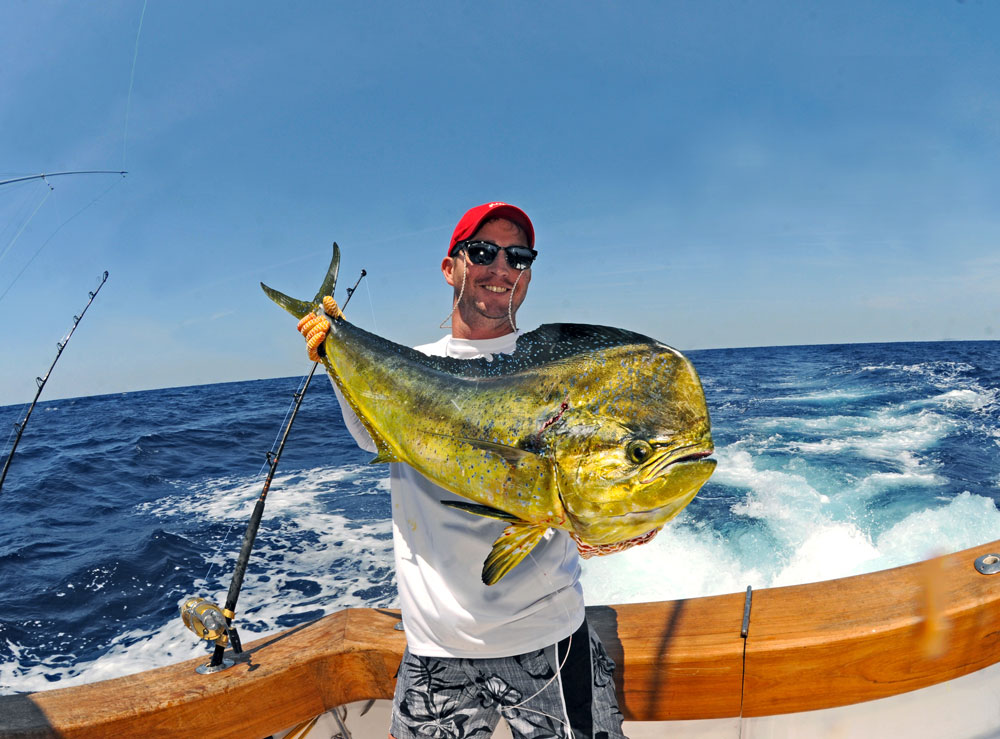
Late spring and early summer are great times to kick off the offshore fishing season off the Carolinas coast by targeting some colorful, pelagic fish that provide plenty of excitement to any trip.
The line of Sargasso weed beside the rip looked really inviting. But there hadn’t been any action for the first 20 minutes. That changed quickly when two neon yellow and green streaks burst out from a small break in the grass and into the middle of the spread of trolled baits.
A few seconds later, two outrigger clips popped almost in unison. One reel began howling, the clackety-clack of a big offshore reel giving up line against the drag. Before the mate could move to drop back the bait on the line that wasn’t moving, another outrigger clip popped. And this time, the hook found a grip and line peeled off the second reel, confirming a double hookup.
On the bridge, Mike Webb, who runs the charterboat Pelagic out of Atlantic Beach, N.C. maintained the boat’s speed a little longer, hoping he might get another strike. When that didn’t come after 30 seconds or so, he eased back a little on the throttles to make landing the two fish easier.
About 200 yards behind the boat, two dolphin leapt into the air and tumbled wildly, trying to dislodge the hooks. When the dolphin leapt, their brilliant yellow and green colors flashed in the morning sun. This signaled a great beginning to what would become a very productive day.
Dolphin are a favorite catch of fishermen off the Carolinas for several reasons. They don’t just look pretty, they fight hard and are excellent table fare. They make a strong run along the inshore edge of the Gulf Stream off the Carolinas from late spring into summer.
Dolphin are plentiful this time of year
Webb (252-904-3361) and Buddy “Love” Smith (843-356-0585), who runs the Underdog out of Murrells Inlet, S.C., look forward to plying the deep, blue ocean waters along the edge of the Gulf Stream. They make the offshore run daily in season, weather permitting. And they know dolphin are plentiful offshore out of their respective ports in May and June.
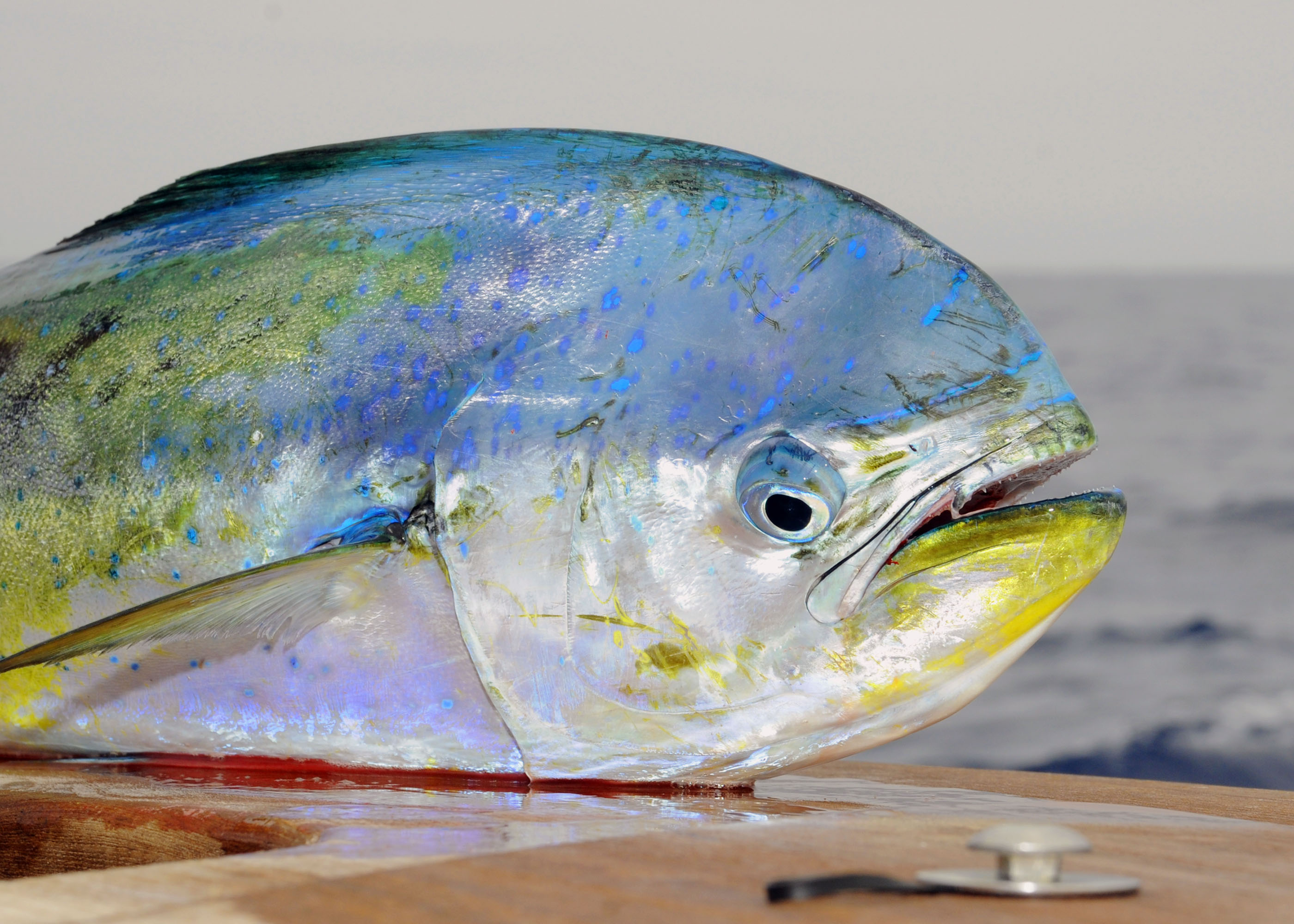
“Once the water begins warming well in May and June, fishermen have a tendency to overrun dolphin,” Webb said. “Dolphin are one of the first fish to break away from the Gulf Stream as the water warms. They move in with the warming water and are often found at the first temperature break as you near the stream. Sometimes this is as close as 17 fathoms.
“Most times, there is a color change with the temperature break. But sometimes it can be subtle and shows better from a distance, then gets hard to see when you’re right on it. This is when a good temperature gauge is invaluable. You can watch it and see where the temperature changes, even if you can’t see the color change.”
Multiple lines mean more hookups
Webb said he’ll start fishing on just such a spot, and he puts out a full spread of nine lines. Smaller boats should be able to troll six lines comfortably and easily. Webb primarily uses medium ballyhoo rigged into sea witches, with a few Ilander and Ilander, Jr.-style lures. He uses a variety of colors, and at least one will be blue/white or blue/crystal, and one yellow-green.
“Mono or fluorocarbon leaders are fine if you’re just after dolphin,” Webb said. “They don’t have lots of teeth, and bite-offs are rare. However, wahoo are still around, especially in late May and early June. So we run the long-rigger lines and a planer line — prime spots in the spread to catch wahoo — with wire leaders to hold up to a wahoo’s sharp teeth. Dolphin aren’t leader shy, so it doesn’t bother them, and they’ll still hit these lines, too.”
Mix up colors for multiple species
In general, Webb said, wahoo like darker colors, and dolphin like brighter colors. But that isn’t always the case. Sometimes, a school of dolphin will hit every lure in the spread, regardless of color. When they are feeding and get excited, the first few hit, and then others in the school charge into the spread after them.
Webb keeps an eye on the water temperature, running it as a graph in one of the panes on his fish finder so he can check at any time. He believes small temperature changes can make a big difference. And temperature changes of several degrees aren’t necessary to locate dolphin.
Once in water in the mid-70s, finding pockets of water with less than a degree of change can sometimes make the difference between a fair and a great catch. Usually, when you find these changes, the dolphin will be in the warmer water. Later in June, when all the water is pretty warm, they may prefer the cooler side.
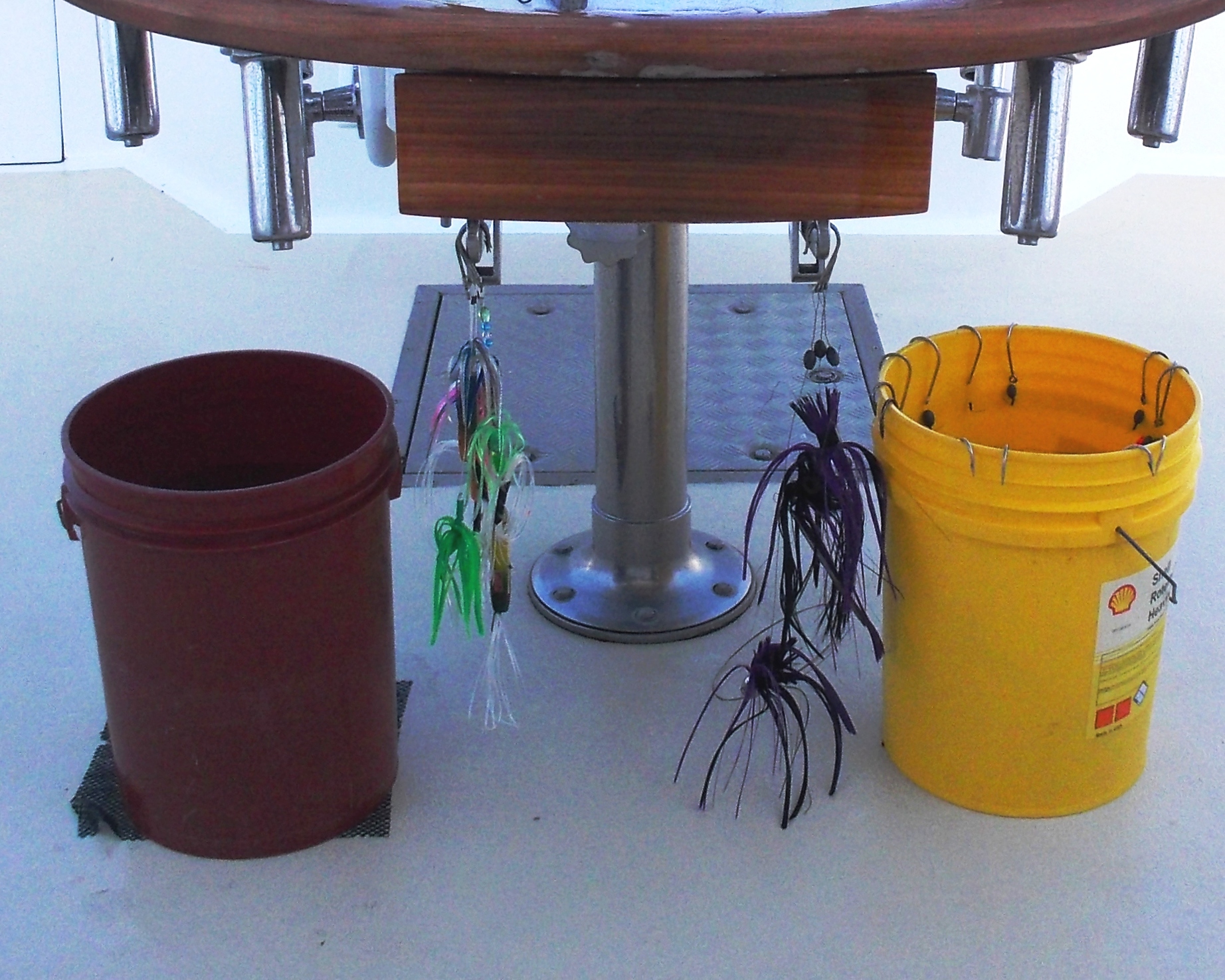
Smith said dolphin fishing out of Murrells Inlet is a little different than many areas. Dolphin will make up the lion’s share of the catch in late May and June, with some blackfin tuna and wahoo and possibly a billfish. Even better, all these species are often in the same area.
“Heading out of Murrells Inlet, we generally head offshore towards 100 fathoms. But we are looking for an edge along the way,” Smith said. “We’re also running over familiar structure, known to hold bait, and looking for it. Whichever we find first is where we stop and put out the spread.
Fish the edges
“The edge can be a lot of things. Some days, it’s a weed line. Other days, it could be a color change, rip or temperature break. These edges tend to gather bait at some point. Once you find the edge, you make a decision to work up or down it to find the bait. When you find a concentration of bait, you usually find fish.”
Smith begins with a spread of nine baits unless his party gets wrapped up in fish before they get them all out — and it has happened. When they locate dolphin and the bite fires off, he’ll keep only five or six rods out. That’s all his mate and anglers can handle in a hot bite.
Smith uses small and medium ballyhoo. He has a couple rigged naked, several on different color sea witches, a couple on Ilanders, Ilander Jrs. or Jags, and often a Green Machine way back. If they’re at 20 fathoms or deeper, one line of the full spread is a planer rig to get it down for wahoo. Once they get offshore near 100 fathoms, he adds one big bait in case a blue marlin is around and feeding on the dolphin or tuna. It happened a lot in 2017 and Smith hopes it continues this year.
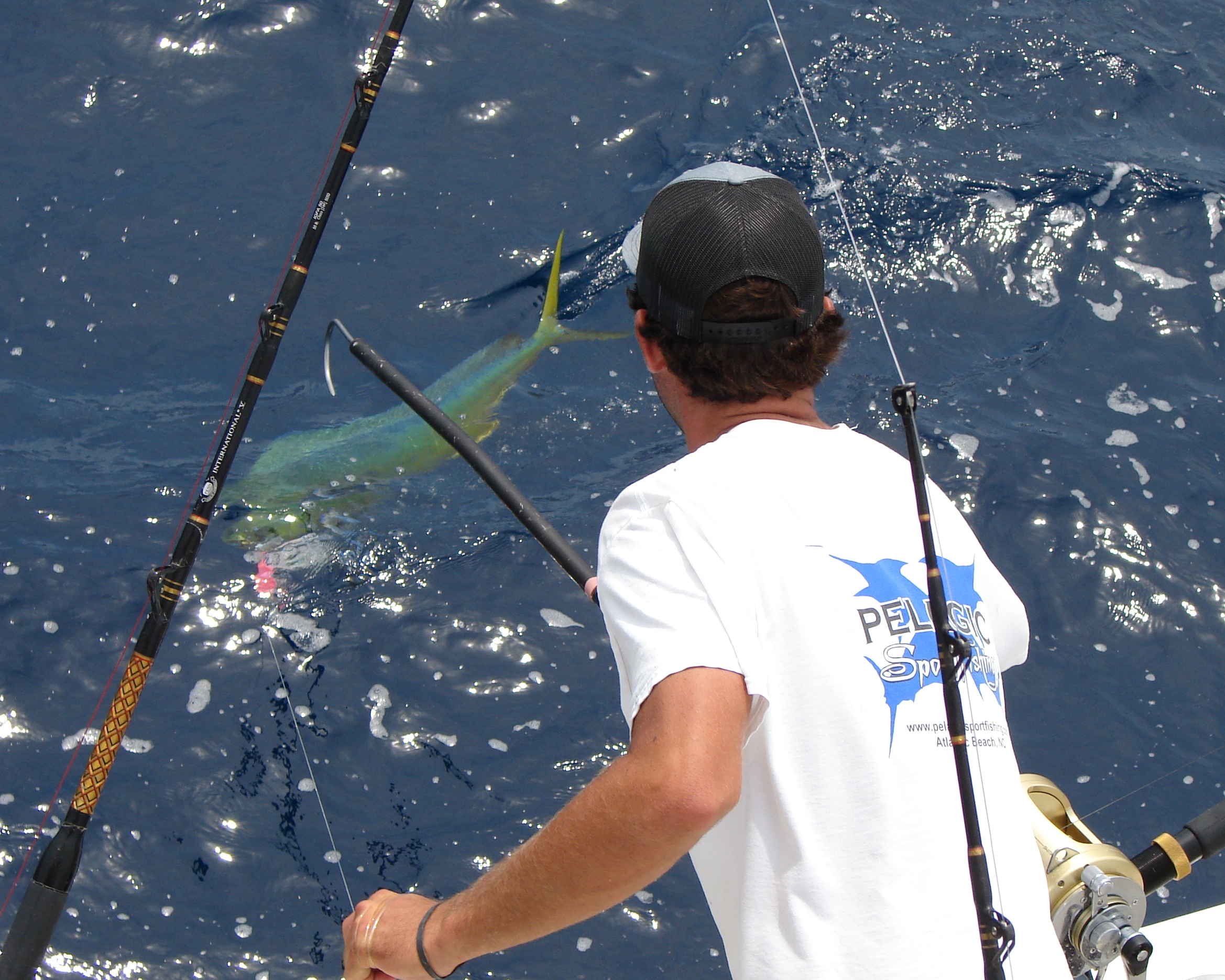
“At least one of my lures will be blue and crystal,” Smith said. “I also like black and blue, especially for wahoo, but dolphin will whack it, too. Dolphin like a variety of colors, and I also always have something pink in the spread.”
Make sure you are prepared with plenty of rigged baits
Smith said many fishermen head out for dolphin unprepared. There may be days when the action is spread fairly evenly across the whole day. But many days, most of the action comes in one or two bursts. He remembered one trip when his party caught 55 gaffers in two hours on five rods. If he hadn’t rigged plenty of baits in advance, a catch that size wouldn’t have been possible. However, with the baits already rigged, the mate could snap the leader off and put on a new one with a fresh bait to have that line fishing again within seconds of boating a fish. Smith recommends beginning the day with a minimum of three-dozen baits rigged and ready to go.
Click here for a tasty dolphin recipe.

